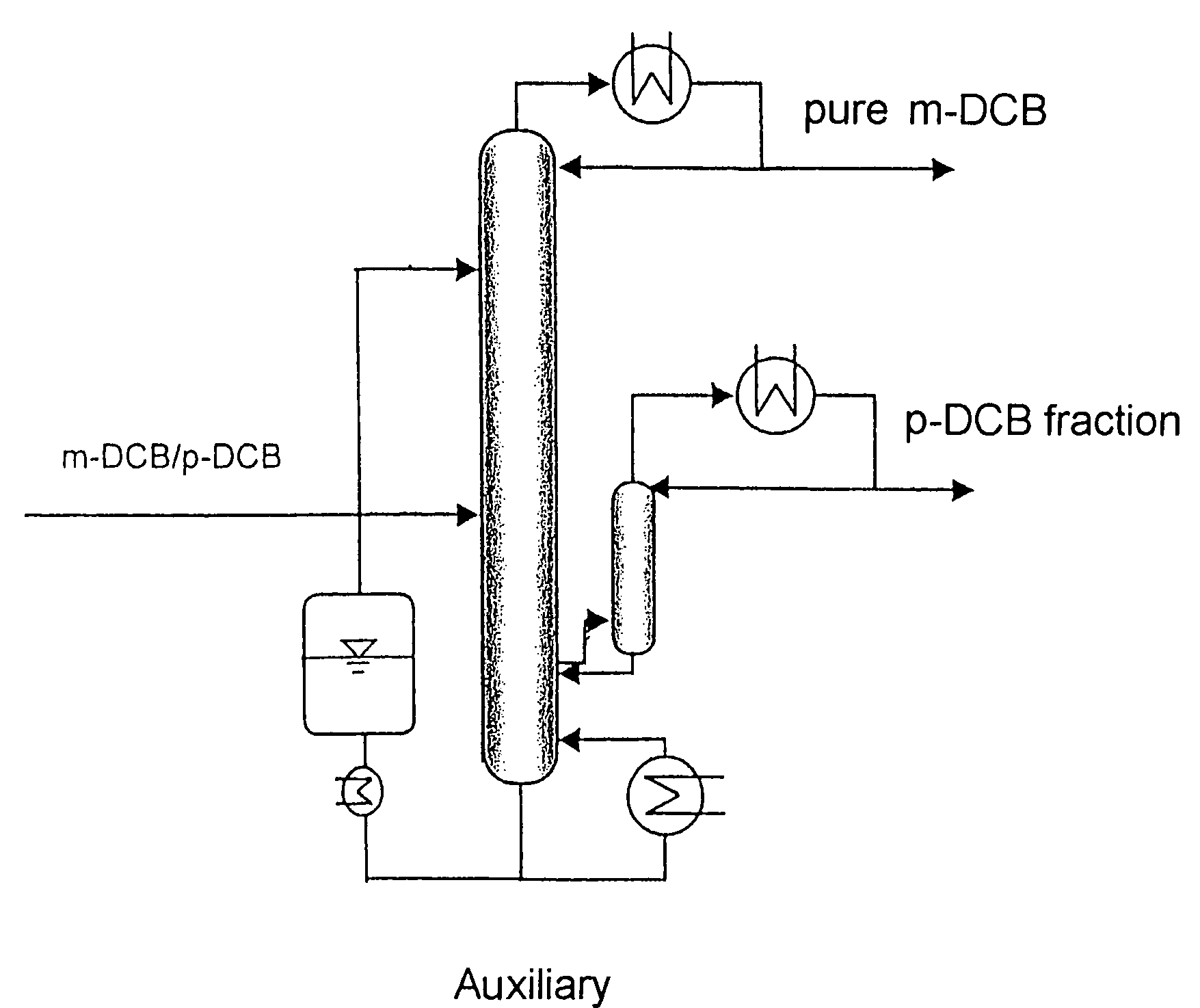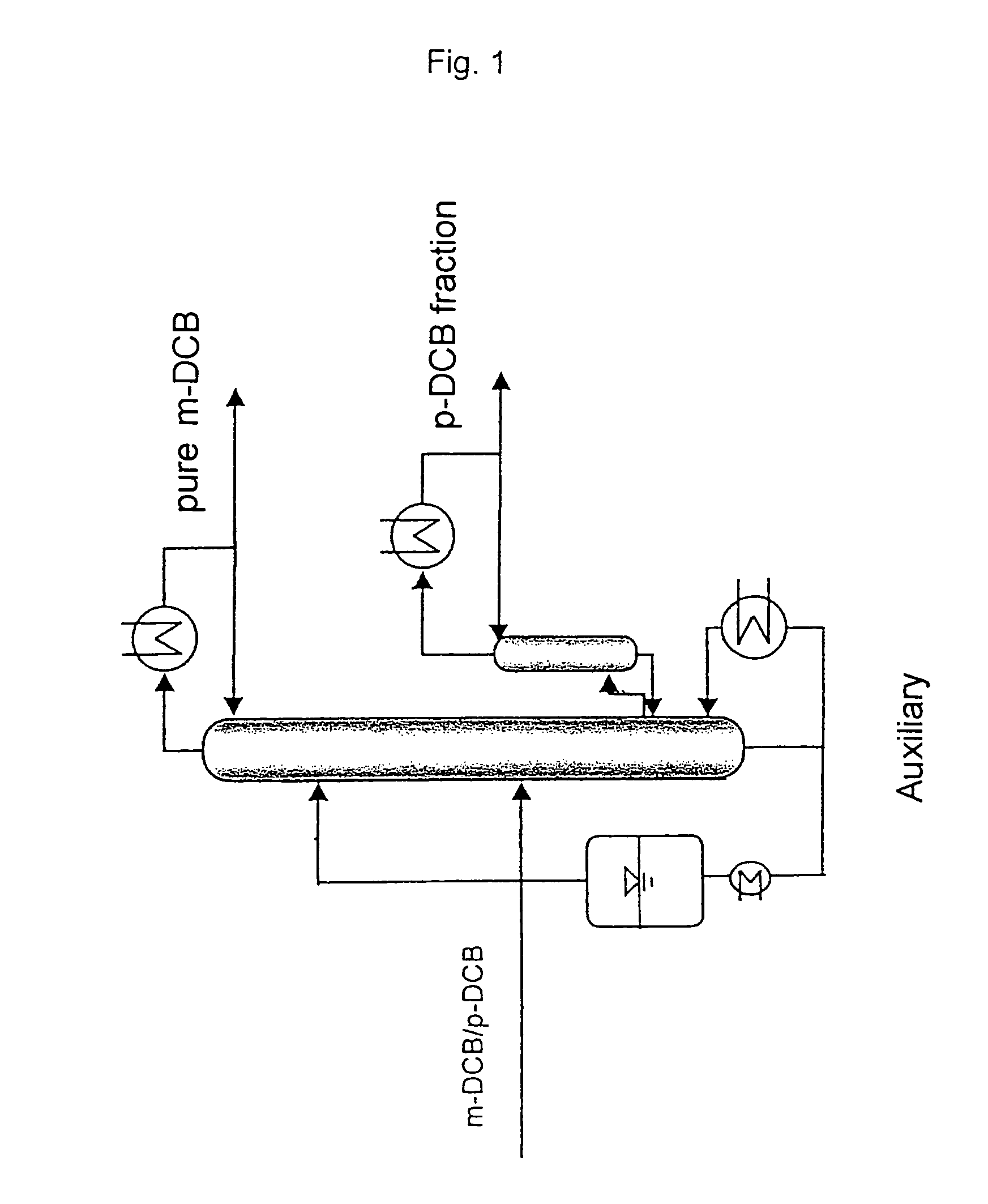Process for the separation of mixtures containing m-and p-dichlorobenzene
a technology of pdichlorobenzene and mixture, which is applied in the field of process for the separation of pdichlorobenzene and mdichlorobenzene, can solve the problems of difficult separation of pdichlorobenzene and m-dichlorobenzene, difficult separation of -dichlorobenzene and p-dichlorobenzene, and virtually impossible distillative separation in high purity by fractional
- Summary
- Abstract
- Description
- Claims
- Application Information
AI Technical Summary
Benefits of technology
Problems solved by technology
Method used
Image
Examples
examples
[0037]A laboratory column which has an internal diameter of 30 mm, has an externally heated vacuum jacket provided with an internal reflective coating, is packed with 3 mm×3 mm (mesh size) mesh rings and has an effective separation height of 2.5 m is fed at a height of 1.0 m with the mixture to be separated and consisting of 75% by weight of m-DCB and 25% by weight of p-DCB at a temperature of 50° C. and at a height of 2.0 m with the extracting agent triethyl phosphate at a temperature of 60° C.
[0038]The pressure at the top of the column is 10 hPa and that at the bottom of the column is 30 hPa. The extracting agent leaves the bottom of the column as a boiling liquid. Furthermore, the bottom stream contains less than half the m-DCB used and more than 99.5% of the p-DCB used. The m-DCB condensed in the condenser and containing less than 1 % by weight of p-DCB is taken off at the top of the column. The amount of distillate to be taken off and comprising highly pure m-DCB is set at 25 g...
PUM
| Property | Measurement | Unit |
|---|---|---|
| pressure | aaaaa | aaaaa |
| pressure | aaaaa | aaaaa |
| pressure | aaaaa | aaaaa |
Abstract
Description
Claims
Application Information
 Login to View More
Login to View More - R&D
- Intellectual Property
- Life Sciences
- Materials
- Tech Scout
- Unparalleled Data Quality
- Higher Quality Content
- 60% Fewer Hallucinations
Browse by: Latest US Patents, China's latest patents, Technical Efficacy Thesaurus, Application Domain, Technology Topic, Popular Technical Reports.
© 2025 PatSnap. All rights reserved.Legal|Privacy policy|Modern Slavery Act Transparency Statement|Sitemap|About US| Contact US: help@patsnap.com



